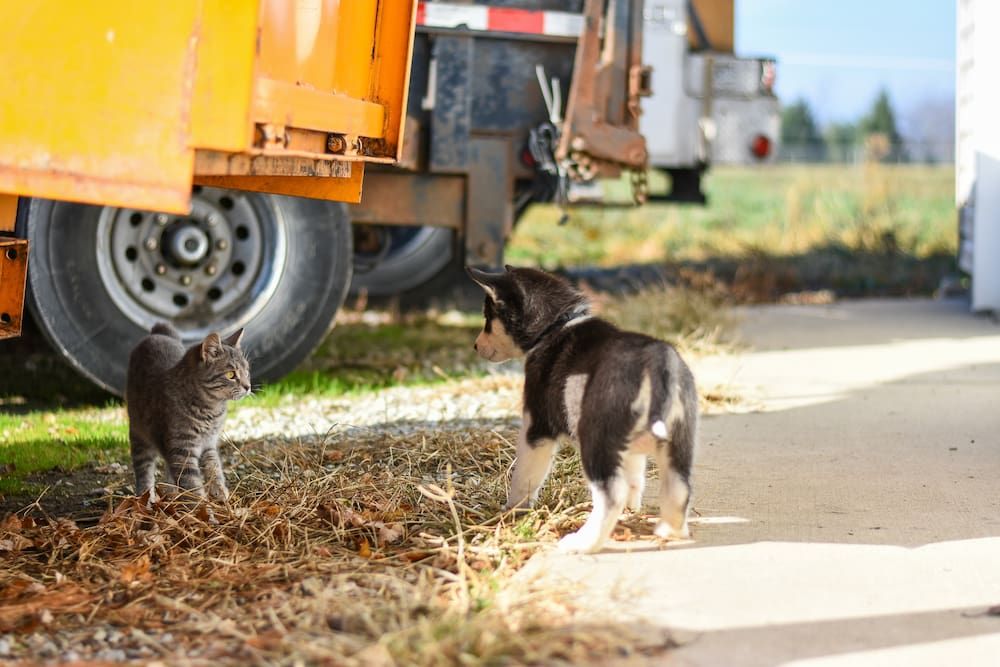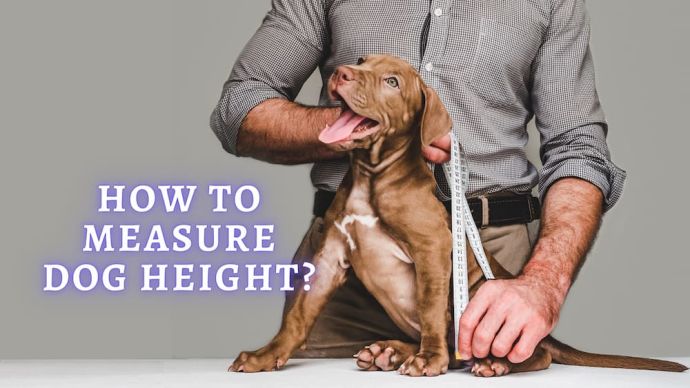How to Introduce a Cat to a Dog? Dos and Don’ts of Introducing New Pets
Written by:
Author: Seb Jenkins
Seb is a professional SEO writer with a degree in Journalism, he has five years of experience in writing and editing. Seb specializes in topics like dog and cat breeds, aquarium guides, and pet care. He is passionate about educating and entertaining animal owners worldwide. In his spare time, Seb enjoys writing fiction novels.
View all 83 articlesLearn about our editorial process and veterinary review board.
Viewed: 94
Updated on: 06/08/2023
We have always been led to believe in the idea of cats vs. dogs as sworn enemies. However, numerous families welcome felines and canines into their homes, and particularly cats and dogs can become best friends. That said, there are good and bad ways to introduce your pets for the first time, especially if one has been living in your home for some time before the second arrives. Fortunately, we have created this all-you-need-to-know guide on introducing cats and dogs for the first time.
Managing Expectations
It is important to remember that we are talking about animals here. Some cats are more social, while others like to be left alone. Some dogs are more playful, while others may not be big cat fans. It’s all about monitoring and adapting when it comes to introducing your cat and dog. Just like two people meeting for the first time, there is no guarantee they will get along. However, there is a way to give them the best possible chance.
Cats who have been around for many years and are used to being alone will often be more reluctant to share their space with another animal then. On the other hand, if you have a very young kitten who has just been taken away from their litter and mother, they may love having another cat or dog to spend time with.
It is worth remembering that cats have territorial instincts. Because of this, you should always introduce them to dogs very slowly; otherwise, an immediate face-to-face meeting will likely end in a fight. It is also important to remember that most dogs are big and strong enough to harm or even kill cats. You need to take responsibility with this situation and take things step by step.
Precautions
You may want to take certain precautions, depending on your animals and situation. Ensure both animals are fit and healthy enough to start the introduction plan. If there is a medical condition or injury, seek your vet’s advice.
If you are introducing multiple cats, then it is a good idea to have one food bowl and one litter tray for each cat to avoid one being territorial over them.
It would help to keep your existing animals’ schedules as close to their normal ones as possible to avoid disruption and stress. If your resident dog eats typically at a specific time, then keep that resident pet schedule.
Cats often enjoy play fighting, but if playing turns into something more serious, never attempt to separate them by hand. Instead, throw a pillow, make a loud noise, or squirt water and vinegar to break up the fight.
Practice obedience commands with your dog to ensure you can control them while they are around the cat for the first few times. Commands like sit and stay, are very helpful.
Separation And Confinement
When you first bring your new pet home, you should keep them in their own part of the house where they cannot immediately see or meet the existing pet. For example, if you bring a new cat home, you should keep them in a room behind a door separate from your dog’s access.
One great technique is to feed both animals on either side of a door, so they can associate the joy of eating with one another’s smell. As time passes, you can move their bowls closer and closer to the door until they are only separated by a few inches of wood while they eat. Once they are comfortable with this, you can use a doorstop to open the door a crack – just enough for them to see each other but not fully meet.
Methods For Introducing A Dog And A Cat
You can use several methods to introduce your cat and dog over time. We recommend using multiple methods, if not all, to acclimatize your animals with one another gradually.
Swap Scents
The following technique you should try is swapping scents. This is very simple but can be very effective. All you have to do is change your cat’s bed or blankets with your dog’s bed or blankets every few nights. This gets them used to each other’s smell. You can also rub one animal with a towel and place it under the food bowl of the other so they continue associating the scent with something positive.
Swap Living Quarters
Once both animals are comfortable in whatever part of the house they are living in, you can swap their living quarters. Let’s say you have a new cat locked away in one of the bedrooms while the dog has access to the whole house. Once your cat is eating correctly and using their litter tray, you can give them a glimpse of the entire house. Let your cat out of the bedroom to explore the place, and shut your dog in the bedroom. This allows them both to explore and get used to each other’s scents without meeting.
Visual Contact
The next step is for the animals actually to see each other. However, this should not be face-to-face to start with. As we mentioned above, having them see each other through a small crack in the door is a great way to start. When they seem comfortable with that, you can use glass for the next step. Put the cat and dog on either side of a window or glass door to have a good look at each other for a short while. Repeat these short visits until they seem calm and comfortable with each other. Start the step-by-step process again if you notice any fear or aggression.
Introducing Kittens And Puppies
You need to be very careful when introducing kittens and puppies. Kittens are so small and delicate that they can be seriously harmed by any excited or aggressive dog. Kittens should be kept away from energetic or aggressive dogs until they are fully grown. With a puppy, most adult cats or a resident cat should be able to keep them in line. However, if you have a shy cat, then keep the puppy away until they have matured a little.
Body Language Of Dogs And Cats
Body language can often give you a big clue as to how your animals are reacting to one another, so keep an eye out. You should always supervise your new cat or new dog when they meet face-to-face during the early days.
Avoid Fear and Aggression
You always want to avoid fear and/or aggression during any meetings. This can quickly become a habit that is hard to break. The whole idea of introducing the two pets gradually is that they get used to each other, and the fear and aggression are dissolved before they actually meet face-to-face. If you notice any fear or aggression, separate the animals immediately and start the introduction steps again.
RELATED: How to tell if a Dog is aggressive towards Cats?
Initial Meeting
After your cat and dog have become comfortable with each other’s smell and the sight of each other, it is time to set up the initial meeting. This is arguably the most important step when introducing two animals. However, this first meeting should be very controlled.
Put your dog on their lead and have them sit or lie down on the floor by using treats. This will keep them calm and put them in a controlled and unthreatening position. You should have another person sit down with the cat on the opposite side of the room. Do not restrain them but give them some treats. The dog and cat will be able to see each other without directly touching them.
Lots of short visits are much better than long ones. The animals will likely stay calm if you only do a quick visit. You should notice them become more comfortable with each other over time.
Supervised Interaction
All initial interactions between your cat and dog should be supervised. As we said before, your dog has the strength to cause serious harm to your cat, and any aggressive behavior can be hard to get rid of if it is allowed to fester. Whenever your cat is free to roam around your dog, keep the latter on a leash. Your cat should always have a hiding spot and a safe way to leave the room. If you are leaving the house, keep the cat and dog separated until they are completely comfortable around one another.
Living Together
It’s all about your own judgment once the introduction process is complete. Some cats and dogs become the best of friends and love keeping each other company and snuggling while you are away. Others should never be left alone together. It’s up to you to make that judgment call based on the behavior you see between them while you are around.
FAQ
How long does it take for a cat to get used to a dog?
The simple answer is that it takes as long as it takes. You need to complete the step-by-step process slowly and without any signs of fear or aggression. As soon as you see one, start the process again. This could take weeks or months. Some experts say the average is between two and three weeks.
What should you not do when introducing a cat to a dog?
Never put a cat and dog in front of each other face-to-face as their first introduction. Instead, follow our step-by-step guide to introduce them slowly and carefully. Once aggression and fear appear, it can be hard to get rid of them again.
Will a dog get used to a cat?
As long as you introduce them slowly and in a safe way, most dogs will at least tolerate cats around the home. However, it really comes down to the individual pets. Some dogs should never be left alone with cats.
How do you know if a dog and a cat will get along?
All you can do is complete the step-by-step introduction process and see whether your cat and dog take to each other. You should notice once they start sharing the same space together whether they get along or not. Some cats and dogs become the best of friends, which is very obvious.
 Cat Care Veterinary Telemedicine: How telemedicine can help manage chronic conditions in pets?
Cat Care Veterinary Telemedicine: How telemedicine can help manage chronic conditions in pets? - 547
- 0
 Dog Veterinary Tips Why is my Dog throwing up: Causes and Preventing (Veterinary Advice)
Dog Veterinary Tips Why is my Dog throwing up: Causes and Preventing (Veterinary Advice) - 21359
- 5
 Dog Care My Dog Keeps Scratching His Mouth: Reasons Why Your Dog Scratching Face
Dog Care My Dog Keeps Scratching His Mouth: Reasons Why Your Dog Scratching Face - 16546
- 1


























